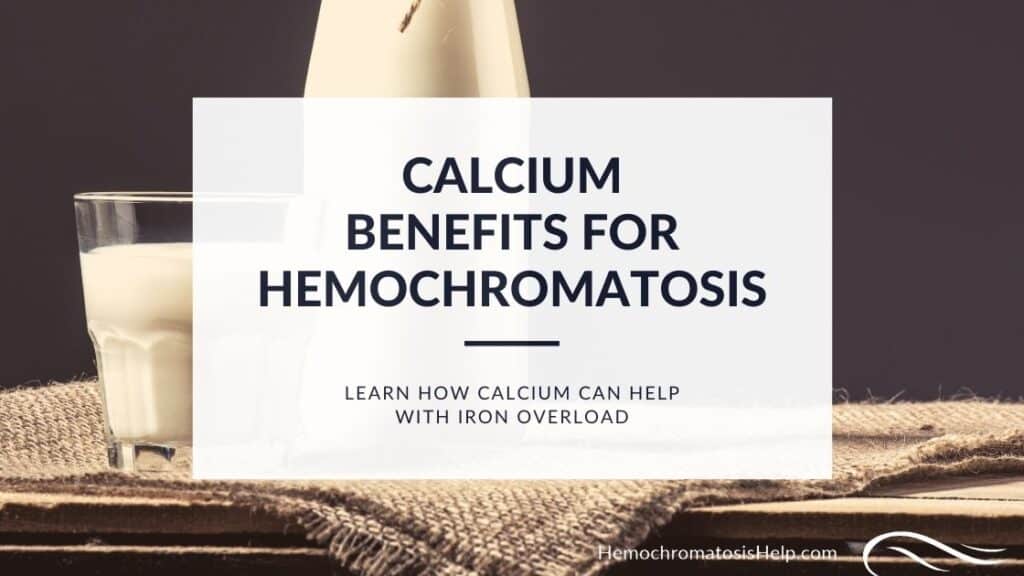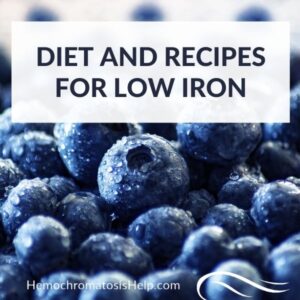“Drink your milk! Don’t you want to grow up big and strong?”
How many of us heard this message as children? I know I sure did!
Dairy products, and other foods rich in calcium, have long been known to help build strong bones and healthy teeth.
But not many people know the other important jobs that calcium plays in the body.
Even fewer people realize the very specific and impactful role that calcium might play in helping the hemochromatosis patient.
It might be one of the most important and easily accessible tools to help fight iron overload.
This article will help show you how important calcium is to the fight against too much iron in the blood, including ways to incorporate it into your life to maximize this superpower!
Calcium’s Role in Hemochromatosis
Calcium, the most abundant mineral in the body, is found in many foods, including dairy, vegetables, and seafood. It is also a common ingredient in nutritional supplements.
It has a unique role to play in hemochromatosis and can be used strategically as a way to limit the iron in a meal from getting inside your body.

Calcium-rich foods and supplements are exceptional iron blockers at mealtime.
In fact, calcium is a potent enough iron inhibitor that many nutritional educators warn people with iron deficiency to avoid this powerful mineral at iron-rich meal times to prevent iron deficiency![i]
This iron-blocking effect is seen both in foods as well as in supplements rich with calcium.
A 1991 study looking at calcium supplements and iron absorption showed calcium citrate supplements “reduced iron absorption significantly by 49%.”[ii]
This is good news for individuals who avoid or restrict dairy foods in their diet since the iron-reducing benefits of calcium supplements also equal almost 50%.
Whether found in dairy foods or supplements, calcium is ideal to combine with meals that contain iron.
Calcium as a Heme Iron Blocker
Heme iron, found in meat, poultry, seafood, and fish, is the most readily absorbed form of iron. This means heme iron will easily build up in our bodies and contribute to hemochromatosis symptoms and consequences. It may be absorbed up to 80–100% in hemochromatosis!
Of all the iron-blockers out there, only calcium has been demonstrated to block heme iron absorption. This is a characteristic unique to calcium, and to the best of our knowledge, is a skill that no other nutrient shares.[iii]
This unique heme iron–blocking effect sets calcium and dairy foods apart from the crowd.
How to Use Calcium for Hemochromatosis
When it comes to using calcium to help reduce iron overload, there are a few strategies to try:
1. Consume foods rich in calcium, especially when eating a meal rich in heme iron: meat, pork, poultry, or fish.
The trouble with using dietary sources of calcium alone is that most foods contain many more nutrients than just calcium, including nutrients that may make iron absorption worse.
For example, many leafy green vegetables are rich in calcium, but they may also be rich in vitamin C, which could negate those same calcium benefits.
This topic may be confusing and therefore is covered in great detail in our books, especially in Cooking for Hemochromatosis; we recommend you read this resource if you want to use dietary calcium as one of your main tools for combating iron overload.
Dr. Kristina has gone through every food group, breaking down the pros and cons of each common food in regards to calcium versus other nutrients to help you make great choices (without having to spend months figuring it out on your own; she’s already done the work for you!).
2. Take a calcium supplement at meals.
This is a more straightforward way to use calcium to block iron at a meal as a supplement shouldn’t include other interfering factors to negate any benefits.
If you do choose to use a supplement, there are a few tricks for success:
- Timing is important. Take it at the same time as a meal to help inhibit the iron from that specific meal. Calcium is healthy at other times too, but it does not block iron when not consumed at the same time as the iron.
- The form of calcium used matters. A common form seen in many products is calcium carbonate; this form is less effective. The form used in our Hemochromatosis Help Calcium Complex is an example of the correct form of calcium to consume.
[i] Leif Hallberg et al., “Calcium and iron absorption: mechanism of action and nutritional importance,” European Journal of Clinical Nutrition 46, no. 5 (1992): 317-27.
[ii] James D. Cook, Sandra A. Dassenko, and Paul Whittaker, “Calcium supplementation: effect on iron absorption,” The American Journal of Clinical Nutrition 53, no. 1 (1991): 106-111.
[iii] Sean R. Lynch, “The effect of calcium on iron absorption,” Nutrition Research Reviews 13, no. 2 (2000): 141-158.
OTHER SOURCES: Holistic Help for Hemochromatosis and Cooking for Hemochromatosis
Professional Quality Supplements Hand-Picked by the Naturopathic Doctors at Hemochromatosis Help.
Related Articles & Links:
- Using Nutritional Supplements in Hemochromatosis
- Supplements Created for the Hemochromatosis Patient
- Benefits of Turmeric in Hemochromatosis
- Benefits of Quercetin in Hemochromatosis
- Benefits of Resveratrol in Hemochromatosis
- Benefits of Milk Thistle in Hemochromatosis
- Benefits of Green Tea in Hemochromatosis





